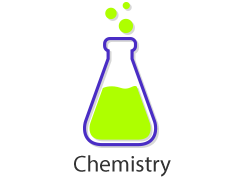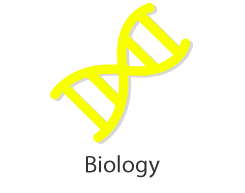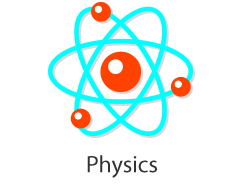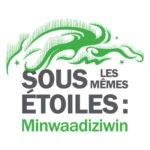USED ONE OF OUR LESSON PLANS?
Fill in our survey for a chance to win a Science North YETI mug! We will draw winners quarterly throughout the school year.
Fill in our survey for a chance to win a Science North YETI mug! We will draw winners quarterly throughout the school year.
In this four-part lesson, students will learn all about health equity, starting by walking through the “seeing over the fence” analogy to understand how equity is different from equality. They will then develop further context for this issue by examining vaccine inequity as a case study. In part 3, one of Science North’s Indigenous Interns interviews a nurse at the Wikwemikong Health Centre on the challenges of achieving health equity in Indigenous communities. In the final section, the Many Nations, One Voice for Wellness team at Telus Spark will take students through a workshop on Dr. Christopher Emdin’s “Science Genius” method with health equity as the theme. Students will learn how to put their thoughts, feelings and experiences about this complex issue into rap and song.
* Internet connection required
In this two-part lesson, students will learn how scientific research is conducted and why scientific integrity is important in determining what sources of information we can trust. They will understand what can happen when a lack of scientific integrity leads to misconduct and explore scientific integrity with a real-world example of how we develop and test new vaccines. They will learn about the importance of understanding history and increasing diversity is science as they explore the contributions of scientists from different communities and backgrounds. Students will also learn the different parts of a research study and the signs of trustworthy research. Each learning objective is followed up by an online game or hands-on activity to reinforce the concepts.
* Internet connection required
Students will click through an interactive choose your own adventure story to help them prepare for vaccination day and explore the questions they have about vaccines, like:
● What are vaccines?
● How do vaccines work?
● Why are vaccines important?
● How do I deal with vaccine-related anxiety?
* Internet connection required
** Right-click the SAVE TO DESKTOP button and select "Save As..." in order to download the experience to your device for offline use

Students will use the scientific research process to determine the type of grass that grows the tallest, while graphing growth data with Python, to discuss the efficiency of water resources.

Use Scratch to create a simple program and calculate the mechanical work for a given force and distance.

In this workshop, students will learn how to have effective conversations about climate change and put it into practice by developing arguments and debating climate change topics with each other.

Students will work together to build a habitat, create an oil spill, and then attempt to clean up the oil spill from the environment, exploring the costs, methods, and impacts of the clean-up.

This lesson shares two different ways to code for data collection when surveying larger groups as part of scientific inquiry projects. The first is using Google Forms and the second is using Scratch block coding. During the lesson, students will explore the importance of input/output coding for both the person developing the code and as feedback for the end users who are being surveyed.
In the Agents of the Immune System GooseChase experience, students will work independently or as part of a team to complete the missions, learn about the immune system and collect points. Students' submissions in the GooseChase app will remain hidden from other students who participate in the Agents of the Immune System experience.

In this lesson, students link the concepts of systems and algorithms by expressing the actions of a system as an algorithm. Since different inputs and outputs of a system act differently, group inputs and outputs into 3 broad categories: energy, matter, and information, and treat each independently before culminating in examining a complex system that makes use of all 3.

Students will learn the signs and symptoms of a concussion. This activity will encourage further discussion about concussions with friends and family. Adapted from Scrambled Brains Activity by Parachute.ca

Students will make a circuit with playdough, and use it as a metaphor for how a concussion can affect our neurons and slow the transmission of nerve impulses. Adapted from Brainfacts.org – Squishy Neuron Activity

Students learn about hydraulics and pneumatics, and how they can be used to lift loads in our school program “Devising Devices”. In this post activity, students will battle each other with syringes and see who will win a thumb wrestle war.

Demonstrate an understanding of the basic structure and function of plant and animal cells and cell processes.

Students will learn about Scratch Coding, and compare the idea of scratch blocks to living cells.

Students will learn appropriate terminology related to climate change, including, but not limited to: water table, aquifer, polar ice-cap, and salinity by coding digital cue cards.

Students will learn about the process in which municipalities use to process and distribute water while designing and creating a map to illustrate the process with a coded Ozobot.

This is a Post Activity for the Solve a Cellular Mystery Program at Science North. Using the PowerPoint presentation provided, students will play~Spot the Differences to review their knowledge about animal and plant cells.
In this lesson, student will apply their understanding of density and buoyancy to create a submarine. Using a pop bottle, they’ll be required to adjust the submarine’s buoyancy so that it can both float or sink. This is an inquiry-based activity where students are encouraged to apply the engineering design process. Strategies to teach this as an FSL lesson are provided.

In this lesson students will learn the importance of microscopy to cell biology as well as the history of microscope development and the difference between a single lens microscope and a compound microscope.

This lesson will start with reactivating what students already know about organelles and cells. In this lesson the students will learn the specific organelle structures and their functions in both plant and animal cells.

In this lesson students will develop a hypothesis and design an experiment to change the volume of gummy bears. They will understand the process of diffusion and osmosis and their importance to cells.

In this lesson students will learn the basic procedure involved in extracting DNA from the cell’s nucleus. They will assess why DNA extraction could be important to human health or the environment.

In this lesson students will compare unicellular organisms to multicellular organisms. They will also observe unicellular organisms in a water sample.

This is lesson one in a five lesson unit on fluids. The unit uses submarines as a framework on which to build knowledge and conduct experiments. This lesson focuses on fluid basics and building a hydrometer.

This is lesson two in a five-lesson unit on fluids. The unit uses submarines as a framework on which to build knowledge and conduct experiments. This lesson focuses on what submarines do. There are experiments on pressure and depth and how fluids of different densities layer on top of each other.

This is lesson three in a five lesson unit on fluids. The unit uses submarines as a framework on which to build knowledge and conduct experiments. This lesson focuses on building a simple submarine that can be raised and lowered by adjusting the amount of air in it.

This is lesson four in a five-lesson unit on fluids. The unit uses submarines as a framework on which to build knowledge and conduct experiments. This lesson focuses on building a second submarine that can propel itself.

This is lesson five in a five-lesson unit on fluids. The unit uses submarines as a framework on which to build knowledge and conduct experiments. This lesson focuses on Archimedes principle and buoyancy.

This is a Pre Activity for the Cell Biology School Program at Science North. In this lesson, students use craft materials to design and build an animal cell model to demonstrate its basic structure and function.


Students will make their own watershed and test them to see where water and pollution will flow.

In this lesson, students build a watershed and use it to conduct experiments which simulate an actual watershed.

In this lesson, students build a model of a watershed to experiment with and learn about the effects of pollution on a watershed.